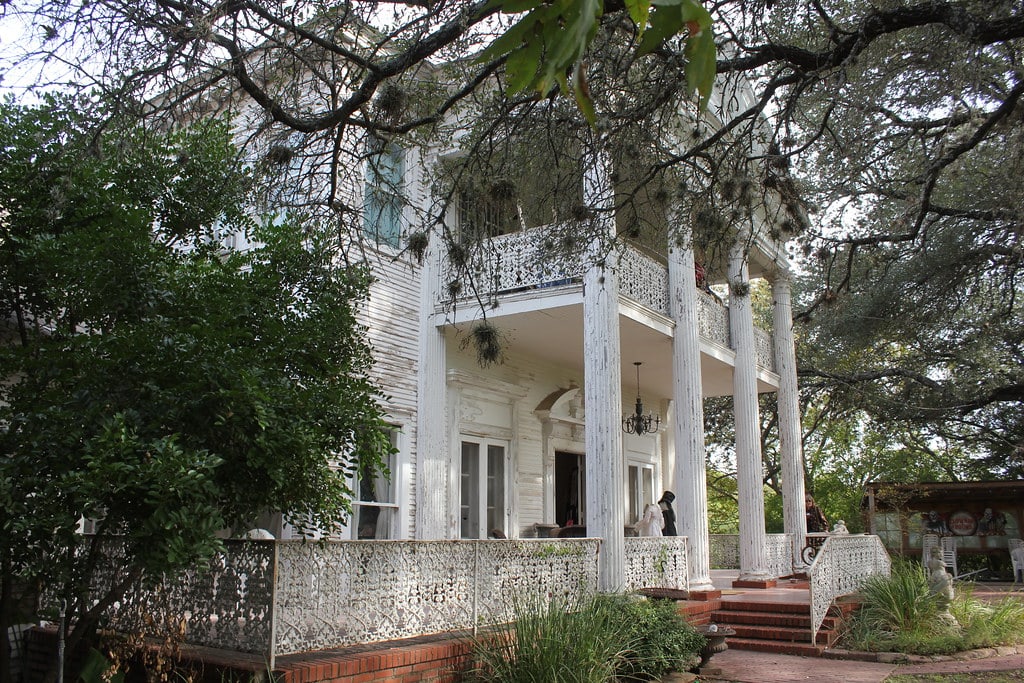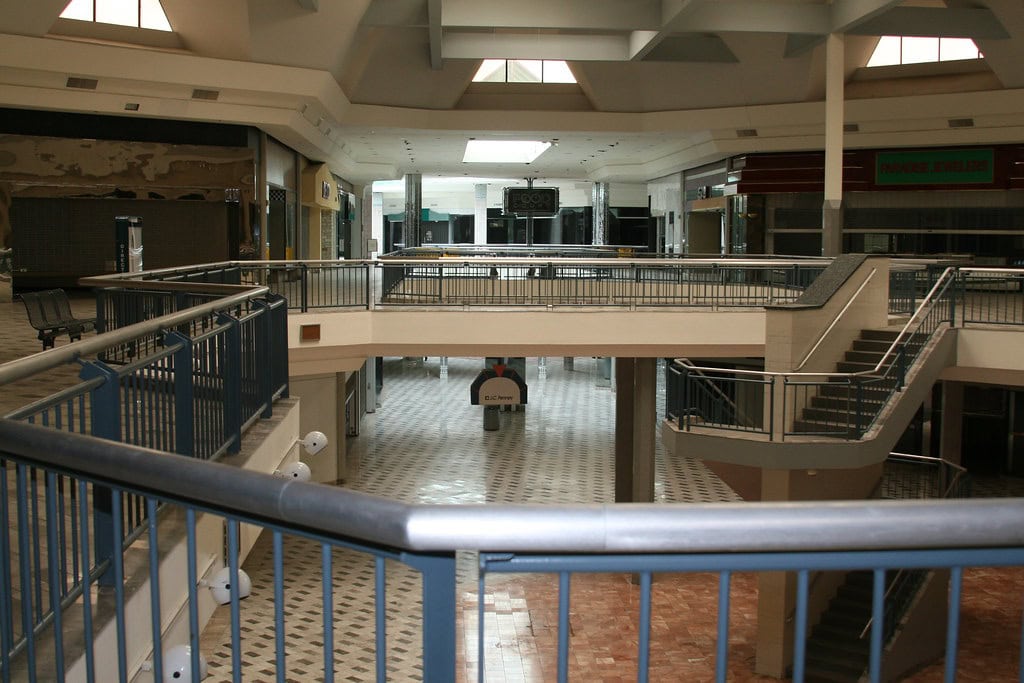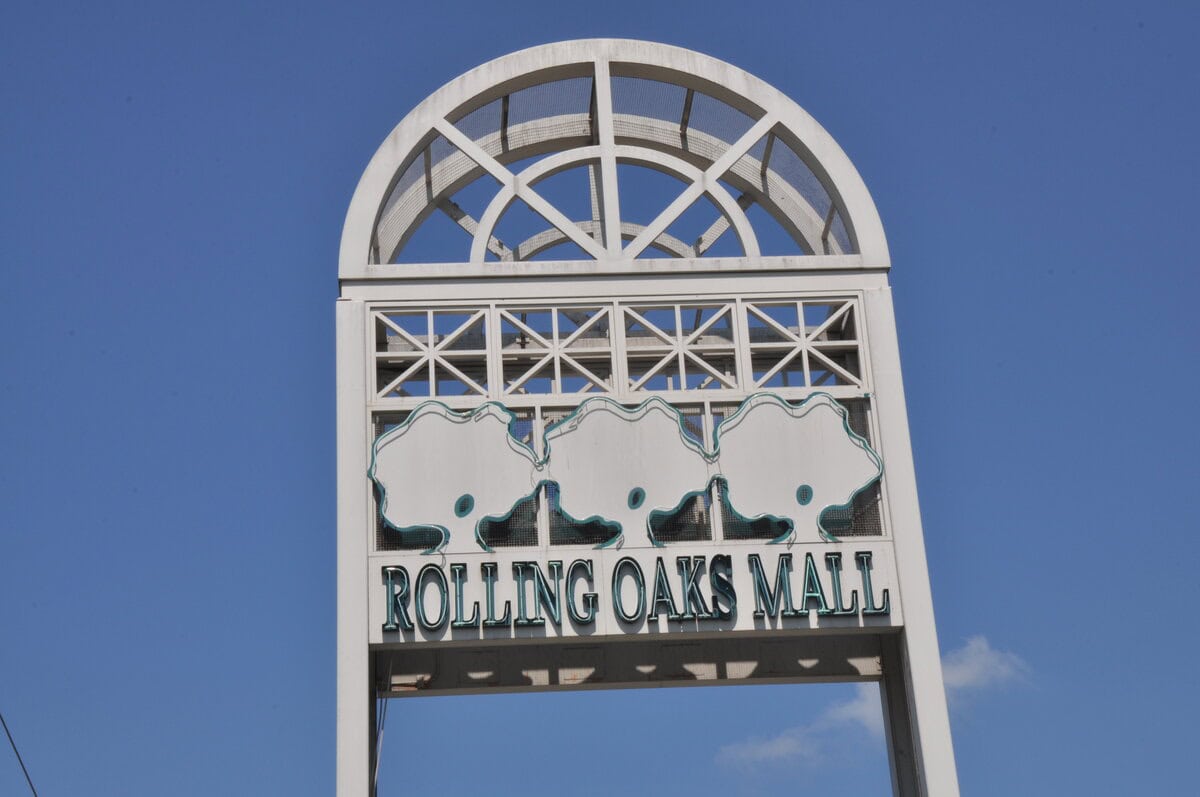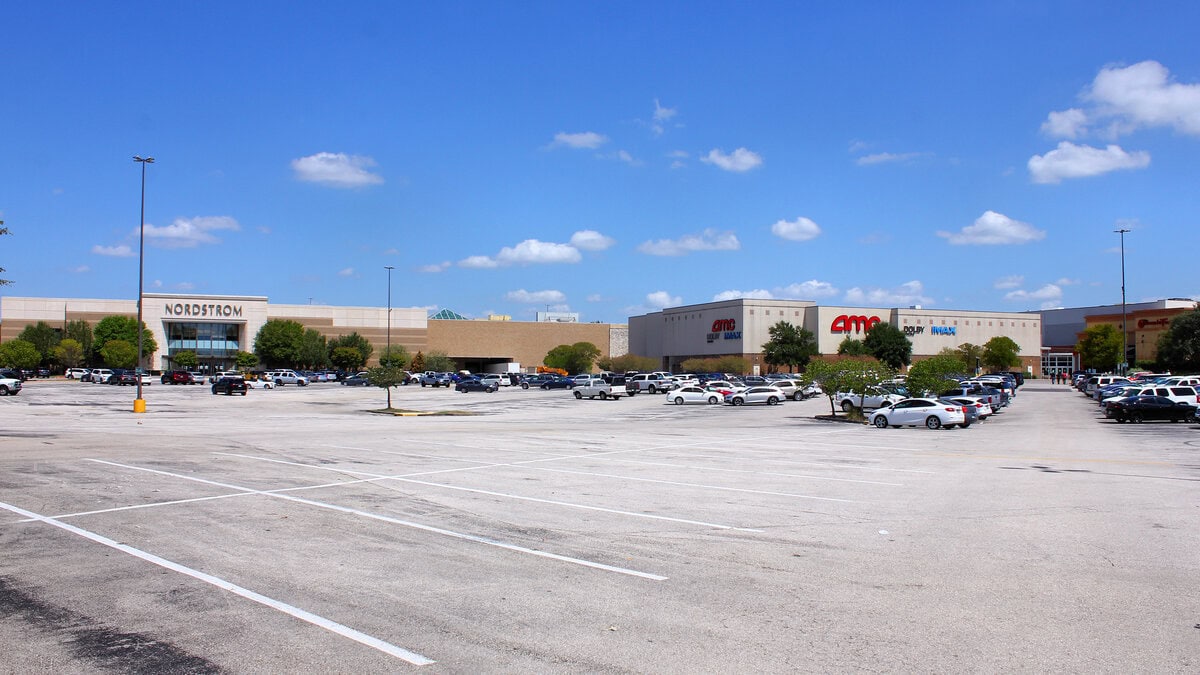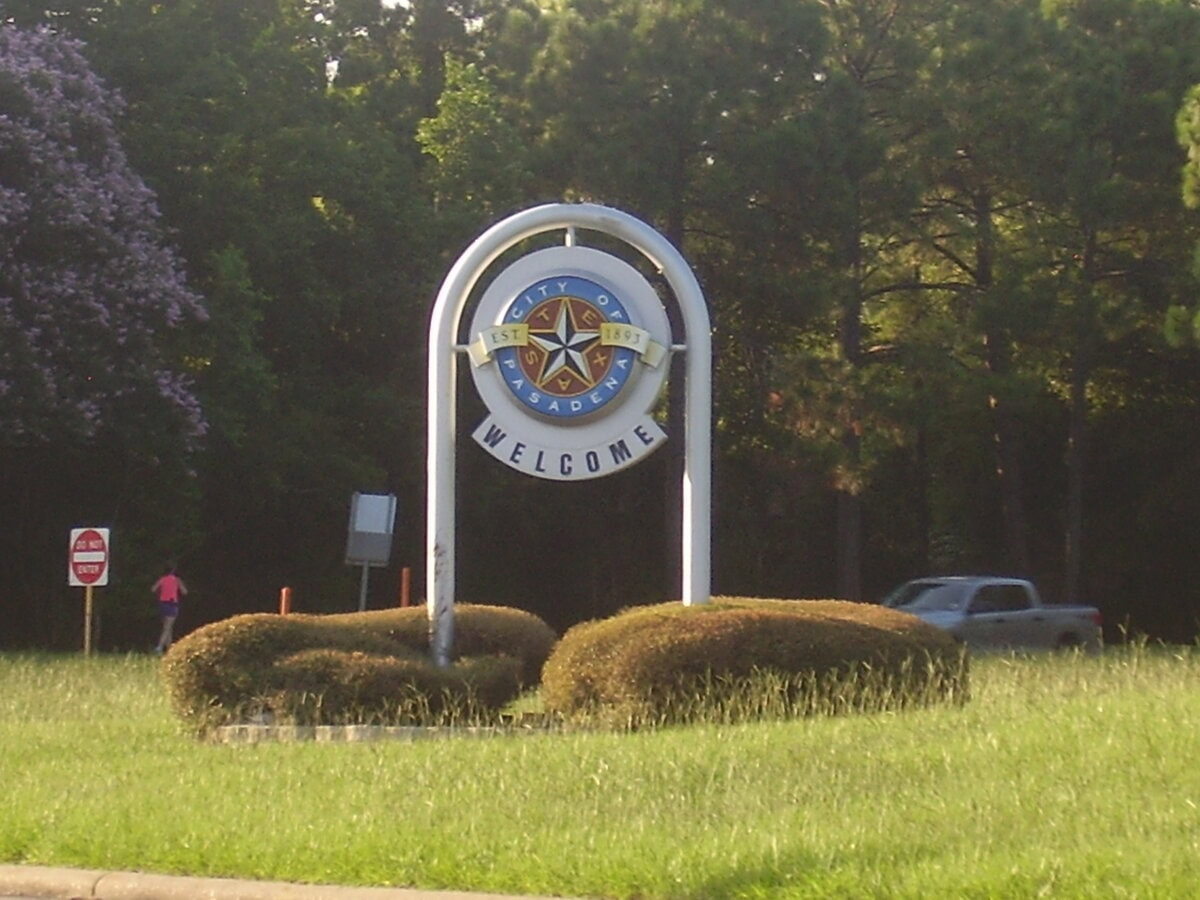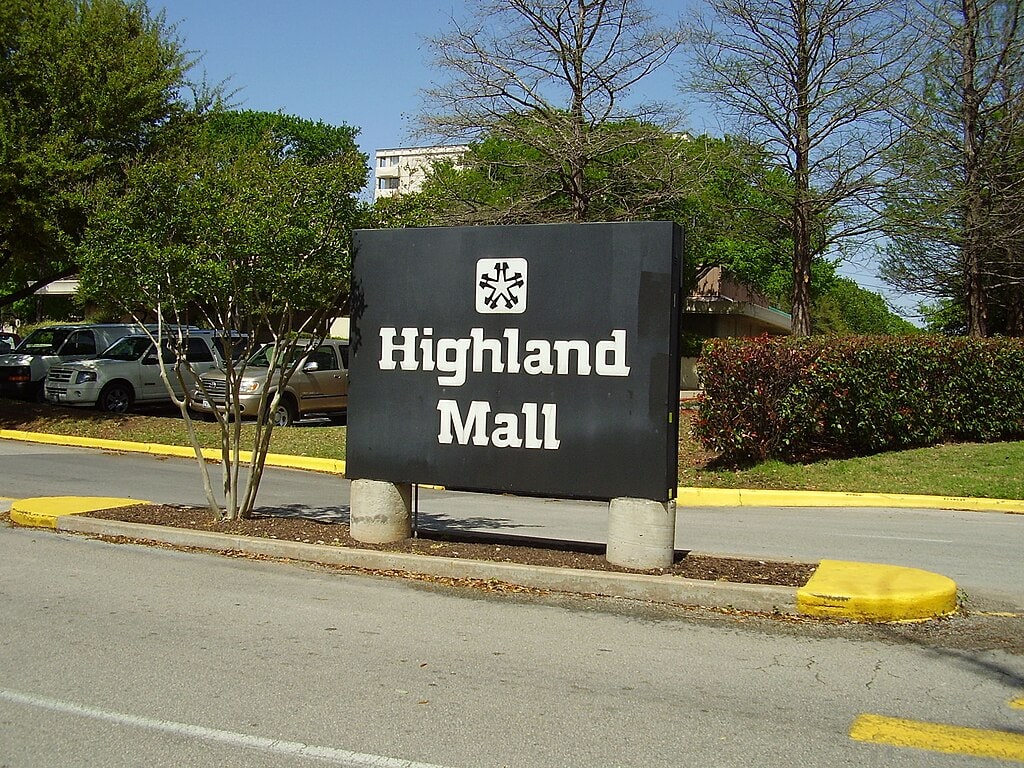Victoria's Black Swan Inn, Stories Told
At Victoria's Black Swan Inn, the creek runs quietly beside the lawn, and the house shows tall columns to the drive, a two-story Greek Revival shape behind Holbrook Road.
The house stands at 1006 Holbrook Road, San Antonio, on land marked by a 1936 tablet for the Battle of the Salado. It is a home that hosts weddings, markets, tours, and investigations.
Owner Jo Ann Marks Rivera has lived here since 1991 and opens it on set days. She named it for a Stratford pub linked to Shakespeare, and calls it a house first.
Columns, deep porches, and a broad stair shape its public face.
Local coverage dates the present house to 1867, while venue notes point to work around 1901 and 1902.
The safest description is late 19th to early 20th century, finished in a classical manner.
A battlefield kept in view
The hill and creek carry a public memory.
On September 18, 1842, Texan volunteers under Mathew Caldwell faced Mexican forces commanded by Adrián Woll after the capture of San Antonio.
The engagement became known as the Battle of the Salado, and the ground by Holbrook Road holds a 1936 Centennial marker that fixes that story in stone.
Accounts emphasize the small size of the Texan line compared with the soldiers called out of town, and they describe repeated advances pushed back along the creek bed.
One Texan casualty, Stephen Jett, is recorded.
The action ended with Woll's withdrawal and the larger column turning back toward Mexico.
Visitors today read that short official text where the road meets the fence, then step into a property that still uses the site for private life and regular public events.
The marker and the venue sit side by side.
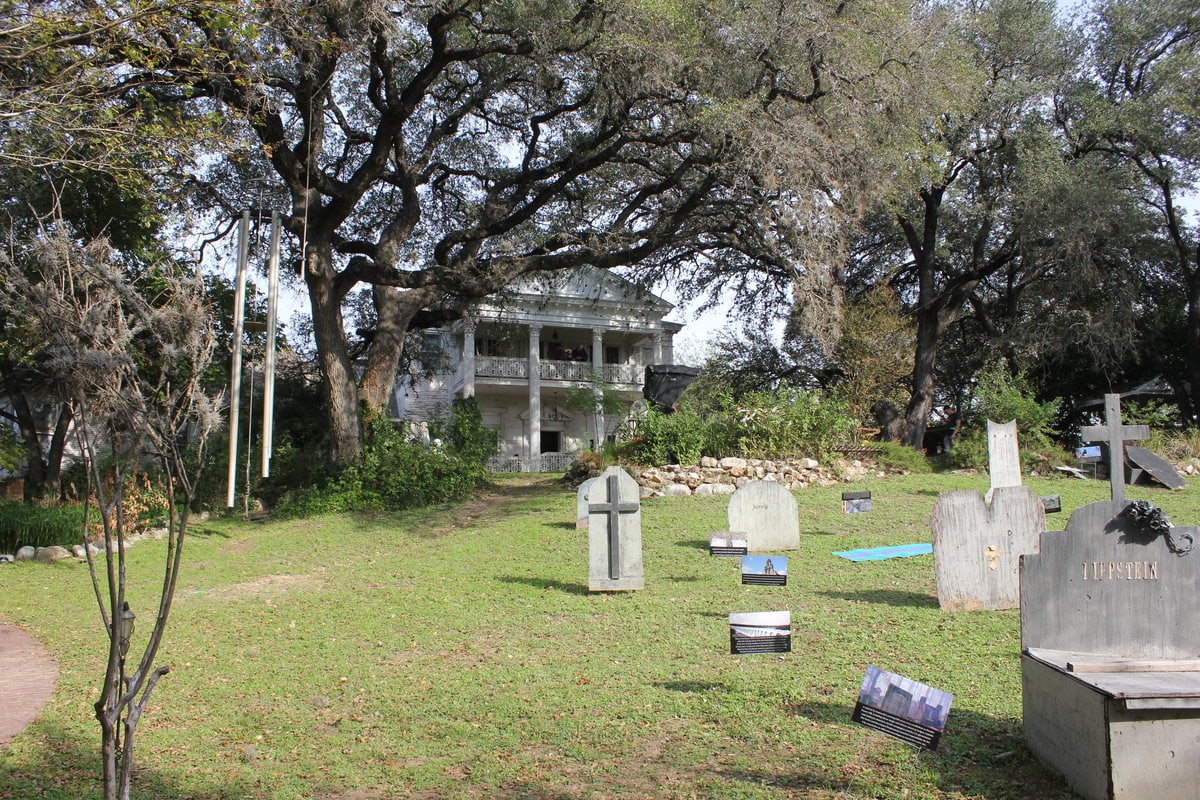
Before the crowds: farms and a house of concrete
After the Republic era fighting, farm use takes over the knoll above Salado Creek.
Sources tied to local preservation and the venue describe a mid-19th-century stone barn on the tract and a later dwelling that evolves into the present two-story house.
The name Sebastian Rippstein appears in late 1860s references connected to dairy structures, suggesting a workplace with livestock.
By 1887, records show a sale to Henry and Marie Mahler.
Their operation becomes known locally as Bluebonnet Dairy, and the family remains on the land into the 20th century.
A precise build date for the current house is debated in the literature.
Some listings point to 1867; others to 1901 or 1902. All agree on classical symmetry and a tall columned front.
What the timelines share is an image of a productive tract along a dependable creek, where outbuildings and the main house rise in stages, then carry forward into the modern era.
White Gables, then a loss that leaves questions
In 1941, the Mahler acreage changes hands to two related families.
Katherine Joline Holbrook and Mary Blanche Woods, with their husbands, enlarge the dwelling and call it White Gables.
As the house grows, it becomes a setting for family life and for visitors who make use of the expanded rooms.
In the 1950s, the property passed to attorney Hall Park Street Jr. and his wife, Joline Woods Street.
Local accounts note that the novelist and television writer Erle Stanley Gardner visited and worked here during this period.
Then the house enters its most documented mid-century tragedy. Joline died of breast cancer in 1959.
Park Street dies in 1965; authorities record his death as a suicide.
The chain of ownership that follows is straightforward, but those two deaths fix this place in community memory.
When people talk about the house today, they tend to recite those dates and names as part of what the walls hold.
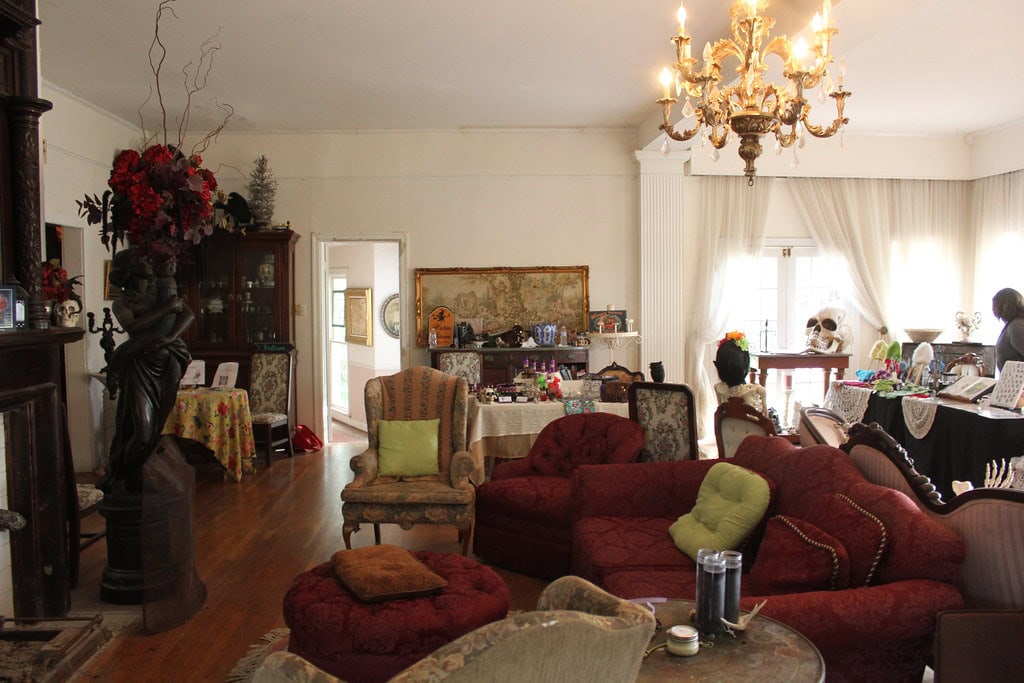
Receptions, a subdivision plan, and a new name
On September 7, 1973, the property was sold to George and Ingeborg Mehren.
They use the house for receptions and plan a subdivision tied to a Salado investment, while keeping the building in working order as a public setting.
In 1980, it transferred to E. Werner Schmidt. In 1987, it was sold again to Sunbelt Self Storage, Inc.
Four years later, on November 18, 1991, Jo Ann Marks Andrews purchased the tract and the house; she is now known as Jo Ann Marks Rivera.
She gives it the name Victoria's Black Swan Inn, drawing on an old Stratford pub associated with Shakespeare.
She raises children here and keeps her residence in the main house while opening the grounds for scheduled gatherings.
The modern life of the place begins in that year, with a calendar that mixes private use and public access, and with a steady effort to maintain the buildings and the lawn that drops to Salado Creek.
Programs, cameras, and an open gate
Since the 1990s, the house has functioned as both home and venue.
Rivera's operation includes weddings and celebrations, a recurring artisan market, historic tours, and bookable paranormal investigations.
The calendar produces a reliable rhythm that brings people to the gate on set weekends and evenings.
Television crews arrive as well. In December 1996, the series "Sightings" filmed a segment on the property.
On August 23, 2013, the Travel Channel airs a "Ghost Adventures" episode focused on the house and its grounds.
Those broadcasts fold national attention into a long local conversation about what happens in older buildings and why people walk through them.
The cameras also fix the setting in a broader archive: a front portico with tall posts, a hall with long sightlines, a barn of stone and timber, and a marker at the fence line that points back to 1842.
The productions add another layer without altering the core function of the site.
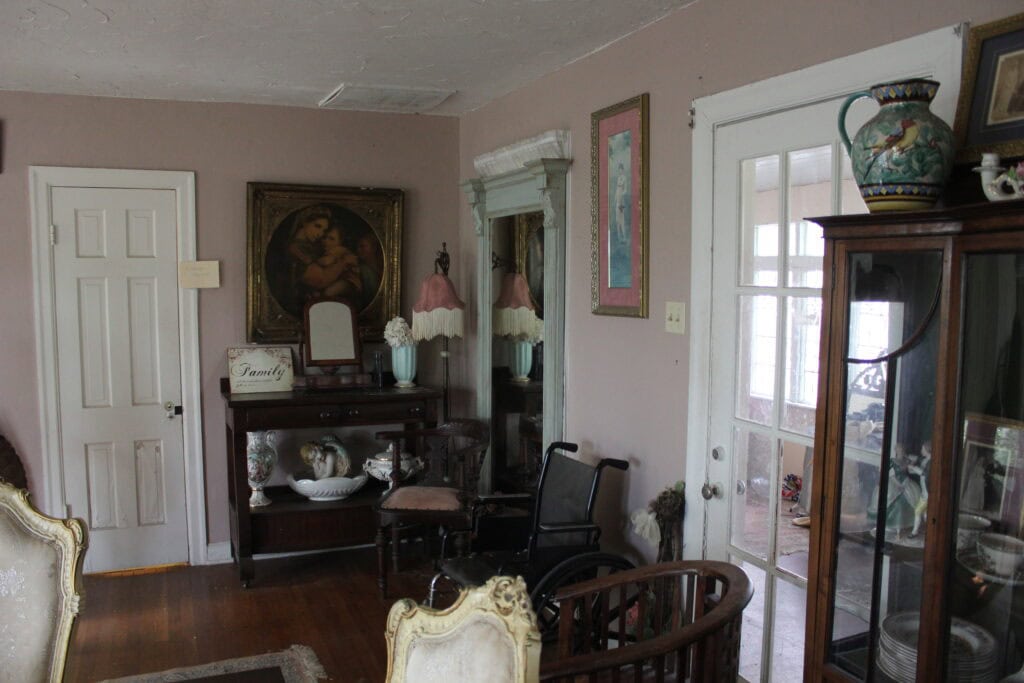
Ghost tours and what has been filmed
At Victoria's Black Swan Inn, the ghost story is organized like any other program.
The site publishes dates for guided tours and for private investigations, and visitors buy tickets for time in the house after dark.
The events do not change the core facts of the property.
They present the setting as it is now, and invite people to hear what has been said about it.
The porch is lit, the lawn slopes to Salado Creek, and the rooms open one by one for groups who want to spend an evening inside.
Television crews have documented that interest.
In June 2022, Portals to Hell features the property in an hour that centers on reports collected there over the years.
The venue keeps the gate open for this kind of attention and for regular public visits.
It also hosts special displays tied to the broader paranormal scene, including a 2025 appearance by the Warren museum's Annabelle doll during a local spirit festival held on the grounds.
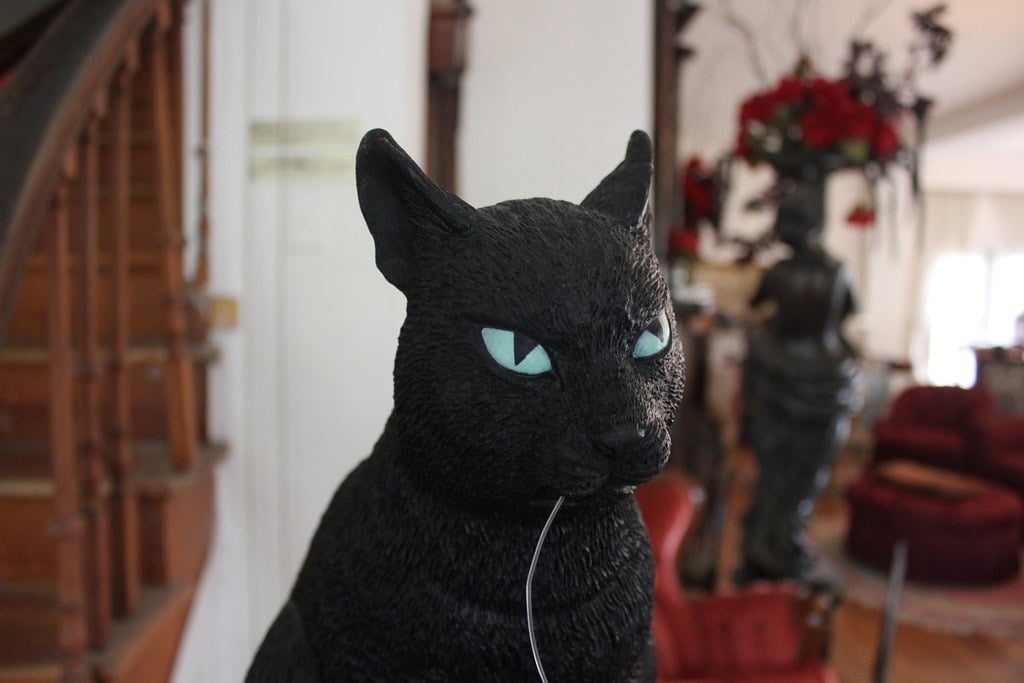
How a place carries its history forward
Walk the porch, and the names come easily. Rippstein and Mahler for the farm era.
Holbrook and Woods for expansion. Street for the deaths that shaped the mid-century story.
Mehren for receptions and a proposed subdivision. Rivera for a modern program that keeps the gate open.
The creek is not a metaphor here; it is a feature that fed cattle, drew a battle line, and now frames photographs from weddings and markets.
The documentary record leaves uncertainties about exact build years and the sequence of additions, but it is clear about the work the place does now.
It holds a layered past in a house that is lived in, while making room for visitors who come to read the marker, walk the rooms, and learn what is known.
